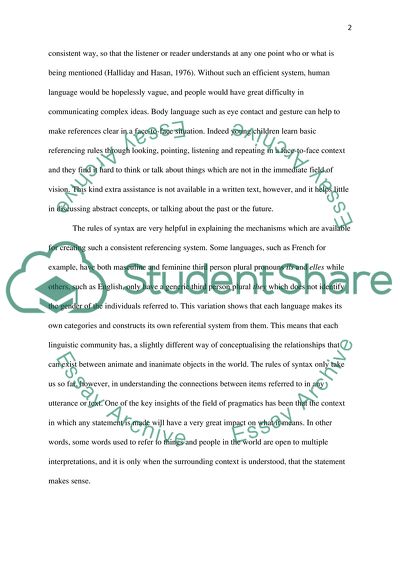Cite this document
(The Standard Linguistic Framework of Grammar and Lexis: the Social Essay, n.d.)
The Standard Linguistic Framework of Grammar and Lexis: the Social Essay. Retrieved from https://studentshare.org/humanitarian/1795740-deixis
The Standard Linguistic Framework of Grammar and Lexis: the Social Essay. Retrieved from https://studentshare.org/humanitarian/1795740-deixis
(The Standard Linguistic Framework of Grammar and Lexis: The Social Essay)
The Standard Linguistic Framework of Grammar and Lexis: The Social Essay. https://studentshare.org/humanitarian/1795740-deixis.
The Standard Linguistic Framework of Grammar and Lexis: The Social Essay. https://studentshare.org/humanitarian/1795740-deixis.
“The Standard Linguistic Framework of Grammar and Lexis: The Social Essay”, n.d. https://studentshare.org/humanitarian/1795740-deixis.


